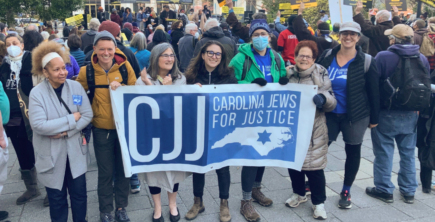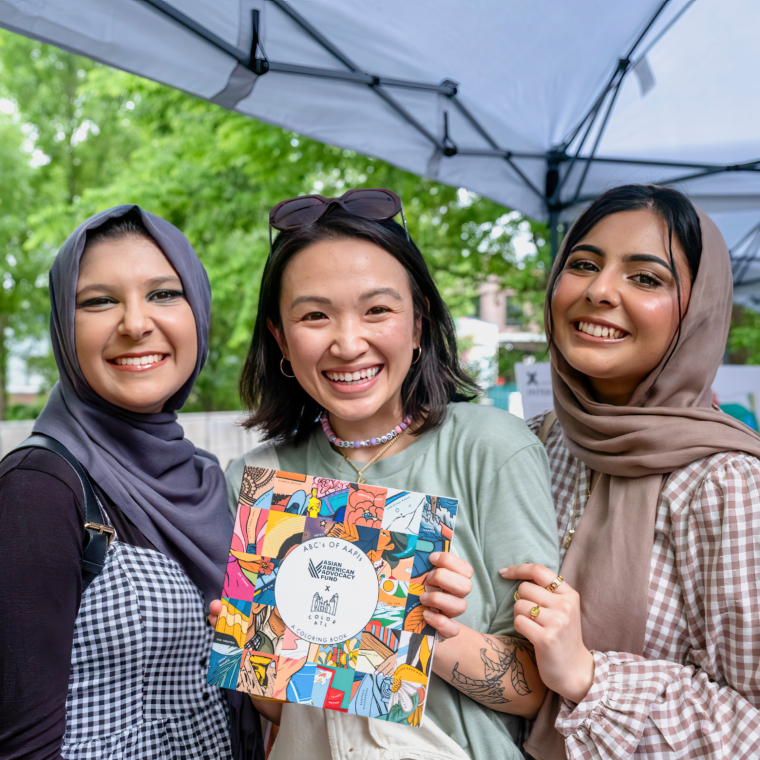
Healthy Individuals & Communities

As a nation, we are confronting some of the most pressing social issues of our time. Addressing these challenges, which are fueled by unjust systems, requires us to think creatively about how we can co-create a more equitable future. Similarly, the theme for Black Philanthropy Month 2024, “Afro-Futures of Giving,” invites us to reimagine our ideal future for Black giving and how we can foster wellness, equity, and justice in Black families, institutions, and communities.
We can build a future where Black philanthropy can thrive and Black-led organizations and communities receive equitable funding. But we can’t build it until we debunk these three common myths that are holding us back:
The racial wealth gap between Black Americans and white Americans is enormous, and it’s getting worse, not better. There’s a staggering $240,120 difference in median wealth between white and Black families. Nevertheless, despite the racial wealth gap, Black Americans gave a higher percentage of their income to charity between 2000–2018. In fact, Black Americans gave an estimated 3 to 4 percent of their income to charitable causes on average during these years. Comparatively, other ethnic groups gave between 1.5 and 3 percent of their income to charity. Despite facing structural barriers to wealth accumulation, Black families prioritize charitable giving.
Moreover, there are many Black donors with the means to give who are profoundly committed to philanthropy. According to the Donors of Color Network, there are at least 1.3 million households in the United States that are led by a person of color with net liquid assets of $1 million or more. A report from the Indiana University Lilly Family School of Philanthropy found that 50 percent of high-net-worth Black American donors direct their contributions toward Black American–related social causes they deem close to their hearts, including race relations (39.7 percent) and criminal justice (9.8 precent), at notably higher proportions than other racial groups.
Black donors give at all income levels. They are highly motivated and committed to education and social justice due to lived experience with inequitable systems and family traditions that have influenced their commitment to giving. It’s important to remember that community-based philanthropy is deeply rooted in the Black church. Black people have been practicing philanthropy for centuries. To build the future we want, we must first celebrate this history.
Emerging research indicates Black donors feel disconnected from and ignored by traditional philanthropy. According to Donors of Color Network, Black donors often share that they consider philanthropic practices as “too transactional.” As a result, Black donors seek charitable giving advice from people who belong to the same civic, professional, and educational organizations. Membership organizations such as the Links, the Boulé, Jack and Jill, Girlfriends, and the Divine Nine fraternities and sororities, as well as historically Black colleges and university alumni networks, are considered particularly important means for Black donors to mobilize fundraising efforts and learn about funding opportunities. Giving circles have also been cited as important networks and advising mechanisms for Black donors because they are often community led. Moreover, Black donors expressed during interviews with the Network that they would like more opportunities to network with each other.
It’s key for philanthropic advisors to recognize Black donors value their networks and have interest in connecting with other Black donors. By using more culturally responsive outreach, advisors have the potential to open more funding opportunities for Black-led organizations and social justice causes. Tides, for example, is committed to offering pooled and collective action funds where communities decide where and how resources are distributed.
There are some common experiences among Black donors: Many have personally experienced racism and discrimination, and many are the first in their family to graduate from college. However, it is important to remember that Black donors are not a homogeneous group based on these common experiences. There are Black people living at the intersections of racism, sexism, homophobia, transphobia, ableism, and more. Black donors have a range of jobs and incomes — there are no “Black jobs.” Therefore, we can’t make assumptions about Black people’s motivations and ability to give. In fact, scholars agree we need more research to understand the giving practices of Black people and donors of color.
After all, we can’t build an equitable future if philanthropic practices aren’t being informed by the people most impacted by inequitable systems and who have the closest connections to the communities we’re aiming to serve.
To learn more about Black philanthropy and donors of color, we recommend the following organizations:

Healthy Individuals & Communities

Our Community

Philanthropy

Read the stories and hear the voices of social change leaders fighting for justice.